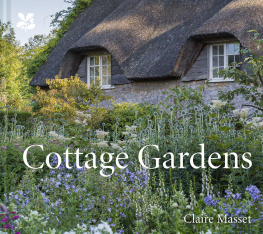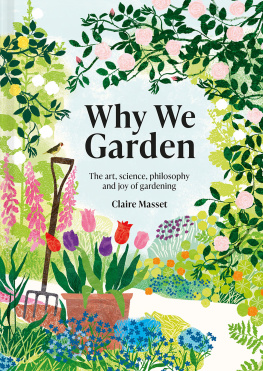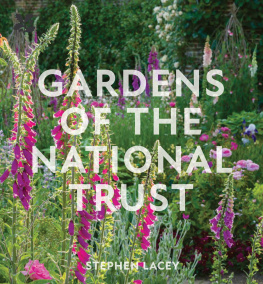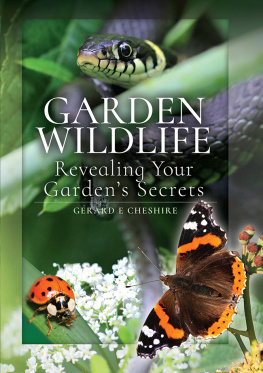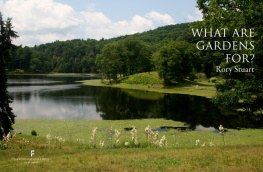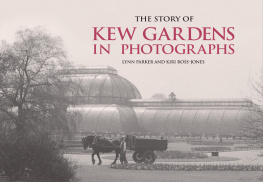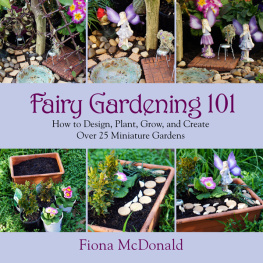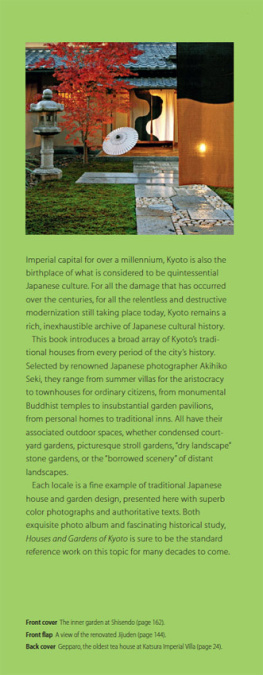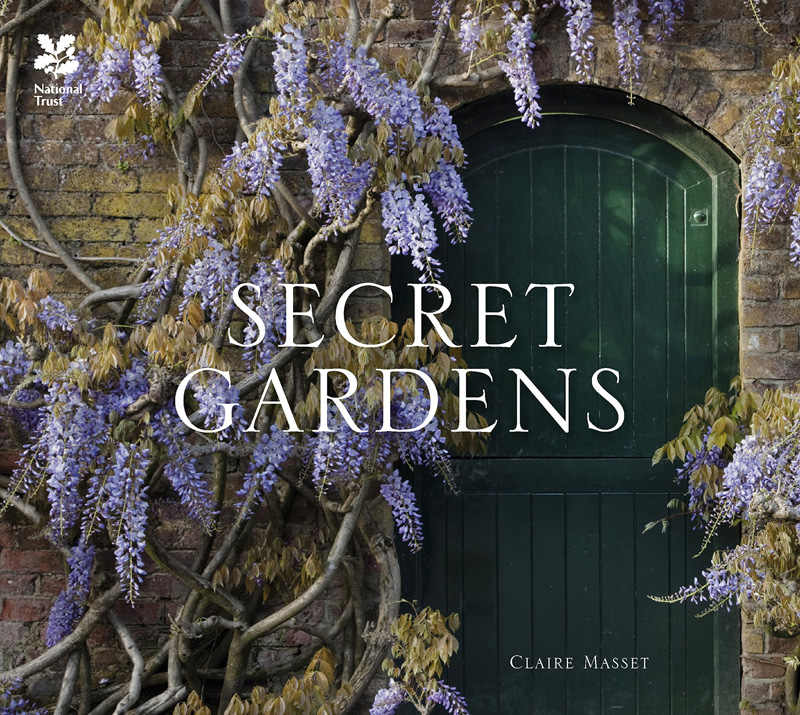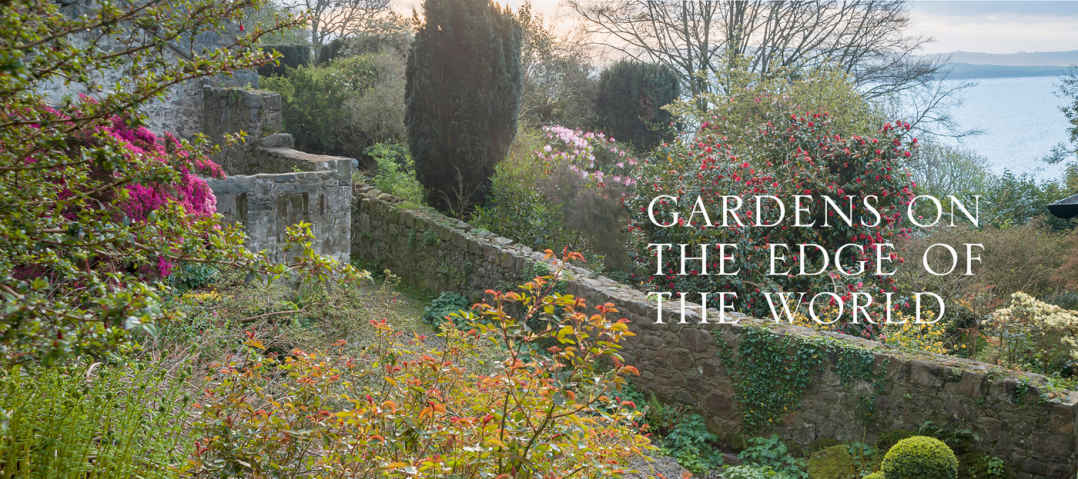SECRET
GARDENS

Foxgloves and red valerian in the ruined abbey folly at Woolbeding Gardens, Sussex.
FRONT COVER Wisteria in flower at Trelissick Garden, Cornwall.
SECRET
GARDENS
CLAIRE MASSET

CONTENTS
CHAPTER I
GARDENS ON THE EDGE OF THE WORLD
CHAPTER II
TOWN GARDENS
CHAPTER III
ARTS AND CRAFTS GARDENS
CHAPTER IV
WRITERS RETREATS
CHAPTER V
MODERN MASTERPIECES
INTRODUCTION
Most gardens are secret, shared only by friends and family. Those of you who have your own plot will know that a garden is an extension of the home, set apart from the commotions and stresses of the outside world. My own garden is a place of nourishment both spiritual and creative and escape.
Over the years Ive realised that visiting gardens can provide this same sense of getting away from it all. For me the best gardens are those that give you that delicious illusion of discovering a place as if you were the first to do so. Like Mary Lennox in Frances Hodgson Burnetts wonderful book The Secret Garden , I love the thrill of finding a beautiful and secluded place. I bask in its quietness and beauty, feeling, if only for a few minutes, as though its mine.
Its this desire for surprise and solitude that drives me to lesser-known gardens. Within them are many delights, from unexpected sights and quiet corners to horticultural inspiration and questions waiting to be answered. How, for instance, was Overbecks an exotic garden where cacti grow unprotected ever created on such a rugged and precipitous stretch of the Devon coast? Who were these intrepid sisters who created, at Plas yn Rhiw, a lush paradise on one of the most wind-battered and remote headlands in North Wales? And why is such a varied and larger-than-most town garden hidden behind a Georgian terrace in Wisbech?

A secluded corner at Monks House, Virginia Woolfs country home and retreat in East Sussex.

Clematis and irises in spring at Monks House, East Sussex.

Late summer in the orchard at Fenton House, London.

The Pool Room at Woolbeding Gardens, Sussex, in late summer.
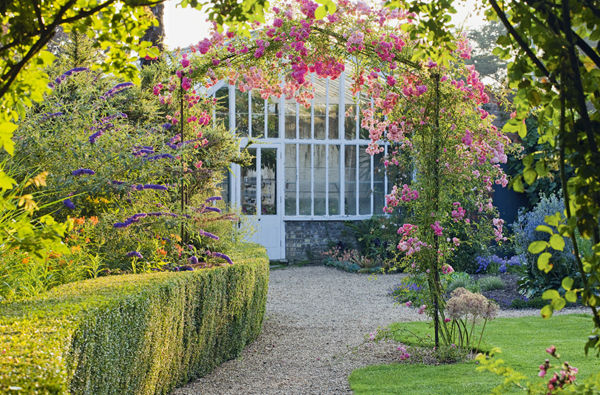
Peckover House in Cambridgeshire, which is famous for its roses.
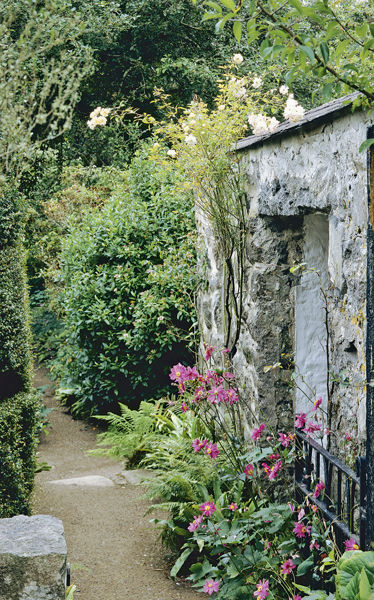
A rambling rose clings to the stone walls at Plas yn Rhiw, Gwynedd.
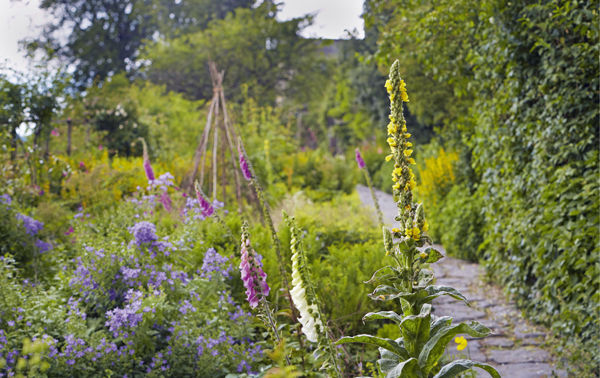
The cottage-style garden at Hill Top, Betrix Potters small farmhouse in Cumbria.
Secret gardens have another draw, too. Because of their relatively small size, I find myself connecting with their creators more closely than I do in the more public domain of a grand mansion. These are intimate gardens, not large showpieces designed for self-promotion. By their very nature, they are personal creations. It sometimes feels as though you are visiting the garden of a friend, even if its creator is world-famous or long gone.
So this is where Virginia Woolf lived and worked, wrote and was inspired, I thought, overwhelmed, when I pushed the little wooden gate to Monks House and first set eyes on her garden. Here in the depths of rural Sussex is where she plotted, and agonised over, many of her novels. But here too is where she dug, weeded, picked pears and apples, and took part in a multitude of gardening tasks, ably assisting her husband Leonard in creating this enchanting place.
Beyond the personal stories, secret gardens are sources of simple and profound pleasures. They take us back to our carefree childhood years. Children love gardens because they represent freedom, discovery and surprise. In these secluded and safe spots they can hide, make dens and create a world of make-believe. Secret gardens are places of wonder and magic for children and adults alike. Here are some of my favourites. I hope you enjoy discovering them as much as I have.
Dawn breaks over the sea, as the garden at Plas yn Rhiw offers glimpses of the Merioneth Mountains beyond.
PLAS YN RHIW , GWYNEDD
To those sailing bleakly across Hells Mouth, there is just one spot where the eye may gratefully rest on relative snugness, wrote the architect Clough Williams-Ellis. This favoured place is Plas yn Rhiw. Set halfway down a hillside and facing south-east, its small manor house, garden and woodland lie in sheltered seclusion, protected from the strong south-westerlies by the ragged tor of Mynydd y Graig. While the rest of the Lln Peninsula is crushed by gales, the garden is like a heated greenhouse in winter. Here the flowers bloom all year round.
The house and garden look the way they do today thanks to three indomitable sisters: Eileen, Lorna and Honora Keating. They fell in love with the area when they started holidaying on the peninsula with their mother in 1919. During their first visit here, they came across Plas yn Rhiw. Uninhabited and unloved, it was already in a state of abandoned neglect, and thus it remained for almost 20 years until the sisters, none of them married, bought it for themselves and their mother in 1938.
When Clough Williams-Ellis saw the garden, he described it as a jungle of fuchsias, figs and azaleas. The house was no better. The front door was so overgrown with brambles that you had to climb through a side window to get in. Dry rot had taken over and a stream ran through the building. Undeterred, the sisters started restoring their new acquisition and, with the help of Williams-Ellis, within a year the house was made habitable.
The sisters, whose father had been an architect, must have appreciated their new homes simple beauty. Behind the elegant Victorian veranda and Georgian sash-windows lay a solid seventeenth-century building. Over the years, Eileen, Lorna and Honora filled it with possessions: fur coats, fashionable shoes, elegant Georgian chairs, the family gramophone and watercolours by Honora, items that speak of comfortable and cosy lives.

Looking up towards the house, you can see the network of box walls in the parterre garden, which was uncovered by the Keating sisters when they started creating their garden.


